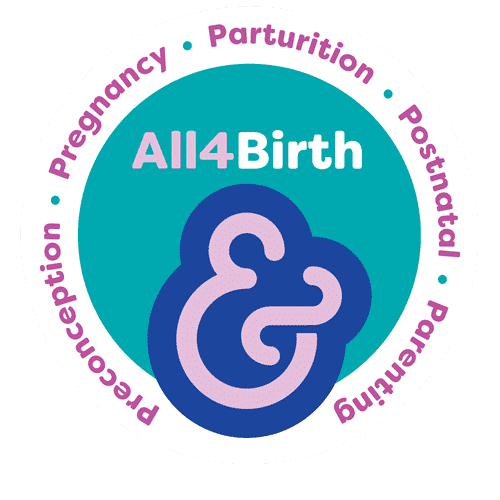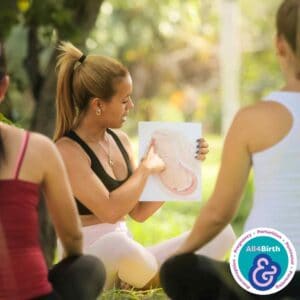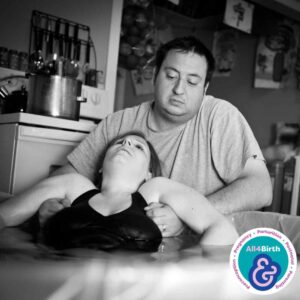Factsheet – Creating a positive birth space environment
Bruna Dias Alonso
Independent Midwife, Lecturer and Researcher based in São Paulo city (Brazil). BSc, MSc, and PhD
@brubsalonso
Summary
This factsheet focuses on the birth space environment, particularly on settings that support normal labour and birth for healthy childbearing persons. Beyond giving birth at home (i.e. planned home birth), various institutional maternity care settings provide care during labour, including hospital-based options alongside midwifery units and obstetric units, as well as freestanding facilities such as freestanding midwifery units. Within these institutional settings, different types of spaces may be available, like bedroom-like rooms, ambient rooms and Snoezelen rooms. In general, the idea is creating a positive birth environment, considering a person’s needs and exploring multiple sensory stimulations that could be helpful during labour and birth. This article explores the benefits of designing and experiencing a positive birth space environment. It summarizes key findings from research studies, offering evidence-based insights. Finally, it provides practical tips to help you make informed decisions or improve birth environments in your community or workplace.
What we know
People at low risk of complications (i.e., healthy women and individuals with uncomplicated pregnancies) may choose any birth setting: obstetric units, birth centres (alongside midwifery units and freestanding midwifery units) or home (NICE, 2023). Obstetric units are always located within hospitals and offer access to medical care if needed, such as obstetric, neonatal, and anaesthetic care. In these places, midwives provide care to all individuals, while doctors are responsible for those at high risk (i.e., women and individuals with health conditions or who have more complex pregnancies) and for managing complications that arise during birth. Alongside midwifery units are typically situated within hospitals, either adjacent to the labour ward or delivery suite or on the same site in a separate building. In the latter case, transfers can be made by walking, wheelchair or bed. Freestanding midwifery units, on the other hand, are located independently, either on a separate site or within a community hospital. Transfers from these units typically occur by car or ambulance. In both alongside and freestanding midwifery units, called also as birth centres, care is led by midwives. Regardless of place of birth, women and people should be supported in their choice (NICE, 2023).
Despite the variety of institutional maternity care settings, there is a consensus that the environment surrounding a childbearing person significantly influences labour and birth. A calm, private and safe ambience is known to promote proper neuro-hormonal functioning, thereby supporting the physiology of birth (Buckley, 2015). When we talk about physiological labour and birth, we refer to a process that begins spontaneously and results in a non-instrumental vaginal birth, with both mother and baby remaining healthy. Furthermore, individuals must have a positive experience throughout the process (WHO, 2018).
Overall, a familiar and comfortable environment is associated with fewer medical interventions during labour and birth, as well as greater satisfaction with care (Hodnett, Downe and Walsh, 2012). But how are maternity settings responding to this evidence? In other words, how do conventional institutional environments—often perceived as impersonal—transform into more welcoming and supportive spaces? The key idea is that the birth environment should be adaptable to meet individual needs, including social and cultural considerations (Newburn and Singh, 2003). This adaptability can be reflected in various types of spaces, such as bedroom-like rooms, ambient rooms, or Snoezelen rooms. These spaces often incorporate multi-sensory elements, including visual, tactile, auditory, and olfactory stimuli, which can positively impact the labour and birth experience. Creating a positive birth environment involves attention to the physical space, including features such as comfortable furniture (especially the bed), access to a shower and ensuite toilet, the availability of immersion in water (e.g., birthing pools), sufficient space to move around, and the ability to control lighting, temperature, noise, and aromas. Cleanliness, privacy, and a sense of safety are also essential (WHO, 2018; Hodnett, Downe and Walsh, 2012; Newburn and Singh, 2003).
A review of ten studies involving 11,795 women found that alternative institutional birth settings (e.g., bedroom-like rooms and ambient rooms) were associated with several benefits. These included an increased likelihood of avoiding intrapartum analgesia/anaesthesia, achieving a spontaneous vaginal birth, breastfeeding at six to eight weeks postpartum, and reporting positive experiences with care. Additionally, the review noted a decreased likelihood of epidural analgesia, oxytocin augmentation of labour, instrumental vaginal birth, and episiotomy. Notably, no significant differences were observed in serious perinatal or maternal morbidity and mortality when alternative institutional birth settings were compared to conventional settings such as conventional hospital labour rooms (Hodnett, Downe and Walsh, 2012).
It is also evident that alternative institutional birth settings tend to favour midwifery-led continuity of care (Sandall et al., 2024) and continuous support (Bohren et al., 2017), both of which are key components of a positive birth environment as identified by women and people (WHO, 2018). Research shows that people receiving midwife-led care are more likely to have a spontaneous vaginal birth and express satisfaction with their care. Additionally, they are less likely to experience interventions and adverse outcomes, including regional analgesia, instrumental vaginal birth, preterm birth, fetal loss, and neonatal death (Sandall et al., 2024).
What we don’t know
According to the systematic review by Hodnett, Downe, and Walsh (2012), concluding the independent effects of the physical birth environment is challenging. This is because the design features of the alternative settings were confounded by significant differences in the organizational models of care.
Families: how to use the evidence
- A calm, private and safe ambience will support you during labour and birth, contributing to better outcomes for you and your baby, including a positive birth experience.
- A place of birth that allows you to be accompanied also contributes to better outcomes.
- If you are at low risk of complications (i.e. healthy with straightforward pregnancy), attendance at the alongside midwifery units or freestanding midwifery units is as safe as what is offered in obstetric units in hospitals. Planned home birth also be a safety option.
- Know the experience of other women and people who gave birth in different places.
- Ask your midwife or GP about the places available to you.
- Know all your available places of birth available
Midwives and birth workers: how to use the evidence
- Ensure policies support women’s choice of birthplace
- Ensure policies support non-obstetric units (i.e. alongside midwifery units and freestanding midwifery units), as these settings result in positive mother and neonatal outcomes,1,12 and the costs of care are also lower13
- Healthcare practitioners should routinely provide all women with full information about their birthplace at an opportune time, i.e. ensuring that women have the opportunity to discuss options, benefits, and concerns.14,11
- Healthcare providers should support women’s choice11
- Maternity care settings should provide physical environments that support hormonal physiology, creating a positive birth space environment through, comfortable furniture (especially the bed); shower and ensuite toilet; access to water immersion (birthing pool), space to move around, lighting control, heating control, noise, clean rooms and privacy7
Links to other resources
 Videos
Videos
Ingleside Birth and Community Centre
 Guidelines
Guidelines
NICE – Information for the public – Care of women and their babies during labour and birth
Queensland Mother and Babies -Birthspace: An evidence-based guide to birth environment design
NHS Birthplace decisions – Birthplace and you
 Articles
Articles
Towards Salutogenetic Birth Space By Zalka Drglin
 Websites
Websites
AIMS – Birth Space, Safe Place: environment, people and attitudes to pain during labour
References
- NICE. Intrapartum care: care of healthy women and their babies during childbirth. National Institute for Health and Care Excellence. https://www.nice.org.uk/guidance/cg109. Published 2014. Accessed May 12, 2020.
- Buckley, Sarah J. Hormonal Physiology of Childbearing: Evidence and Implications for Women, Babies, and Maternity Care. Washington, D.C.: Childbirth Connection Programs, National Partnership for Women & Families, January 2015.
- Pereda-Goikoetxea, B, Marín-Fernández B, Liceaga-Otazu NE et al. A qualitative study of hospital birth perceptions: The helix of priority needs. Midwifery. https://doi.org/10.1016/j.midw.2019.03.018
- Downe S, Finlayson K, Oladapo O, Bonet M, Gülmezoglu AM. What matters to women during childbirth: A systematic qualitative review. PLoS ONE. https://doi.org/10.1371/journal.pone.0194906
- Schneck CA, Riesco MLG, Bonadio IC, Diniz CSG, Oliveira, SMJV. Maternal and neonatal outcomes at an alongside birth center and at a hospital. Rev Saúde Pública. https://doi.org/10.1590/S0034-89102012000100010
- Hodnett_ED, Downe_S, Walsh_D, Weston_J. Alternative versus conventional institutional settings for birth. Cochrane Database of Systematic Reviews. 2010. doi: 10.1002/14651858.CD000012.pub3.
- Newburn M, Singh D. Creating a Better Birth Environment Women’s views about the design and facilities in maternity units: a national survey. The National Childbirth Trust 2003.
- Sandall_J, Soltani_H, Gates_S, Shennan_A, Devane_D. Midwife-led continuity models versus other models of care for childbearing women. Cochrane Database of Systematic Reviews. 2016. doi: 10.1002/14651858.CD004667.pub5.
- Bohren MA, Hofmeyr GJ, Sakala C, Fukuzawa RK, Cuthbert A. Continuous support for women during childbirth. Cochrane Database of Systematic Reviews. 2017. doi: 10.1002/14651858.CD003766.pub6.
- Berg M, Goldkuhl L, Nilsson C et al. Room4Birth – the effect of an adaptable birthing room on labour and birth outcomes for nulliparous women at term with spontaneous labour start: study protocol for a randomised controlled superiority trial in Sweden. BMC. https://doi.org/10.1186/s13063-019-3765-x
- Coxon K, Chisholm A, Malouf R et al. What influences birth place preferences, choices and decision making amongst healthy women with straightforward pregnancies in the UK? A qualitative evidence synthesis using a ‘best fit’ framework approach. BMC Pregnancy and Childbirth (2017) 17:103 doi 10.1186/s12884-017-1279-7
- Hollowell J, Rowe R, Townend J, et al. The Birthplace in England national prospective cohort study: further analyses to enhance policy and service delivery decision-making for planned place of birth. Health Serv Deliv Res doi 10.3310/hsdr03360
- Schroeder E, Petrou S, Patel N et al. Cost effectiveness of alternative planned places of birth in woman at low risk of complications: evidence from the Birthplace in England national prospective cohort study. BMJ2012;344:e2292 doi:10.1136/bmj.e2292
- Hinton et al. Birthplace choices: what are the information needs of women when choosing where to give birth in England? A qualitative study using online and face to face focus groups. BMC Pregnancy and Childbirth (2018) 18:12 doi10.1186/s12884-017-1601-4
- NICE. Intrapartum care: care of healthy women and their babies during childbirth. National Institute for Health and Care Excellence. Avaliable in: <https://www.nice.org.uk/guidance/ng235/resources/intrapartum-care-pdf-66143897812933>. Accessed 27 January 2025.
- Buckley, Sarah J. Hormonal Physiology of Childbearing: Evidence and Implications for Women, Babies, and Maternity Care. Washington, D.C.: Childbirth Connection Programs, National Partnership for Women & Families, January 2015.
- WHO recommendations: intrapartum care for a positive childbirth experience. Geneva: World Health Organization; 2018.
- Hodnett ED, Downe S, Walsh D. Alternative versus conventional institutional settings for birth. Cochrane Database of Systematic Reviews 2012, Issue 8. Art. No.: CD000012. DOI: 10.1002/14651858.CD000012.pub4. Accessed 27 January 2025.
- Newburn M, Singh D. Creating a Better Birth Environment Women’s views about the design and facilities in maternity units: a national survey. The National Childbirth Trust 2003.
- Sandall J, Fernandez Turienzo C, Devane D, Soltani H, Gillespie P, Gates S, Jones LV, Shennan AH, Rayment-Jones H.Midwife continuity of care models versus other models of care for childbearing women.Cochrane Database of Systematic Reviews 2024, Issue 4. Art. No.: CD004667.DOI: 10.1002/14651858.CD004667.pub6.
- Bohren MA, Hofmeyr GJ, Sakala C, Fukuzawa RK, Cuthbert A.Continuous support for women during childbirth.Cochrane Database of Systematic Reviews 2017, Issue 7. Art. No.: CD003766.DOI: 10.1002/14651858.CD003766.pub6.











